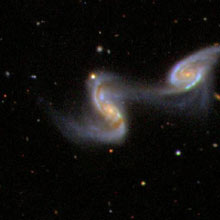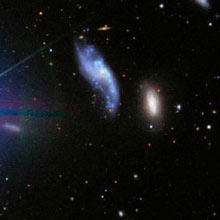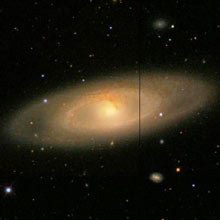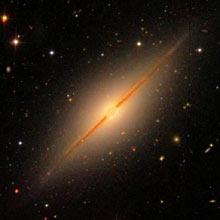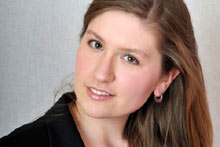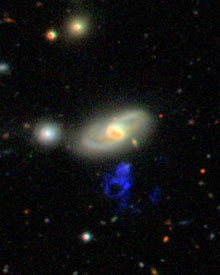
June 19, 2009
Part of the fun of reading the history of natural history is harking back to a lost time when science was an amateur activity. The childhood of science was more like the science of childhood: grown men and women collected shells or beetles, pressed and sketched plants, peered through telescopes or microscopes, hunted for arrowheads or dinosaur bones. Learning by doing, they went out and observed, described, and classified the natural world, about which so little was known that any keenly observant individual had a good chance of discovering something new.
By contrast, today’s science often seems to be a high-tech priesthood, impenetrable to anyone with math anxiety and without a Ph.D. The thickets of arcane symbols; the journal articles whose only recognizable words are “and” and “the”; the massive, intricate instruments, and the supercomputers that run and debrief them—all could not be farther removed from the hands-on tools and direct immersion in nature that made early science an accessible adventure. Discoveries now come down from on high, and even relatively literate enthusiasts like me depend on science journalists, educators, and popularizers to translate those findings into plain English and decode their life-changing implications. Actually doing significant science requires years of preparation and specialization.
Or so you might think.
Our June 2009 issue, however, features two examples of a fascinating countertrend: “civilians” making vital contributions to science, doing parts of the job that neither computers nor scientists can do. If you’re a nonscientist who loves science, it turns out you don’t have to love it from afar. You can take part. You can provide data that, pooled, adds up to big discoveries—and you could even make a discovery of your own.
Galaxy Zoo, the subject of Charles Liu’s Out There column “Science en Masse,” is a brilliantly ingenious solution to astronomy’s enviable problem: Too Much Information.
High-speed computer networks and breakthroughs in telescopes now allow astronomers and particle physicists to collect vast amounts of data in very short periods of time. But this has created a problem: there’s too much data for anyone to look at or make sense of. . . .

Dr. Alex Szalay [of Johns Hopkins University’s Department of Physics and Astronomy] . . . explains that in today’s world, computers . . . collect data whose volume is growing exponentially. “Every year,” he says, “we collect as much data as was ever collected from the beginning—from the time of the Greeks. Experiments in astronomy and particle physics can acquire data at the rate of several terabytes (a thousand gigabytes) a year, and soon that will accelerate to a petabyte (a thousand terabytes) a year.” How to organize this avalanche of data and render it accessible to researchers? . . . “all over the world . . . interesting new data sets are being collected, but scientists don’t have time to process this information to a central location.”
Dr. Szalay and collaborators from Caltech, Microsoft, and elsewhere saw computing power as not only part of the problem, but part of the solution: they kicked off a project to connect and pool many separate data sets into one universally accessible grid, which eventually became the National Virtual Observatory. In collaboration with its international counterparts, the NVO aims “to make it possible for astronomical researchers to find, retrieve, and analyze astronomical data from ground- and space-based telescopes worldwide.”
There’s just one problem: computers can only go find what people tell them to look for. And there are cosmic secrets hidden in those masses of data that are so new astronomers don’t even know to look for them.
| Enter the Zoo— |
Audio Player 1
|
—the brainchild of Oxford University astronomer Chris Lintott. Somebody needed to comb through the ever-growing mountains of data, looking for the kinds of patterns and anomalies that only a human brain can spot, and Lintott had the wild hunch that you didn’t need a Ph.D in astronomy to do it. If ordinary people could learn to act as the coarse filter, separating galactic sheep from goats, they’re so much more numerous than specialists that they could form an army big enough to make a serious dent in the data. Sure enough, in the first phase of Galaxy Zoo, the consensus of large numbers of lay volunteers, given a brief online training session, sorted spiral from elliptical galaxies and right- from left-handed spirals as accurately as astrophysicists. As you’ll see at that link, the classification process not only proved itself but yielded game-changing new information and questions about galaxies, selecting out both groups of objects and individual phenomena for further study.
But Charles Liu has told you the story. I’m here to give you the links.
Learn about it:
- The source for all the galaxy images “zooites” have classified so far is the Sloan Digital Sky Survey, a bold initiative to “map one-quarter of the entire sky in detail, determining the positions and absolute brightnesses of hundreds of millions of celestial objects”—“the largest map in human history.” It’s generated in the neighborhood of “15 terabytes (trillion bytes) . . . rival[ing] the information content in all the books of the Library of Congress.”
- “We’ve built a large community, larger than the Swiss Army—we’re ready to invade! Give us your data!” The Zoo’s Pamela Gay gives a presentation at the June meeting of the American Astronomical Society, looking back at GZ’s accomplishments and ahead at things to come, such as delving into the Hubble archive.
- Follow GalaxyZoo on Twitter and get updates on the OOTD (Object of the Day) and other good-humored wonders.
Jump in:
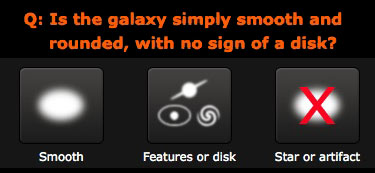 
- Here, you can try your own hand at classifying galaxies (a more venturesome process now in Galaxy Zoo 2).
- Could making a contribution to science be as fun and addictive as playing Tetris or Minesweeper? If you can see yourself classifying a few galaxies on your lunch hour or during a bout of insomnia, sign up here. You’ll not only be doing a good deed, but joining a close-knit, purposeful and playful online community that embraces the globe (and the observable universe).
- One of the questions you’ll be asked about each galaxy you look at: “Is there anything odd?” When young Dutch schoolteacher Hanny van Arkel answered “Yes”—just a week after signing up as a “zooite”—her life changed, and so did astronomy. (Here’s a podcast of Hanny telling her story.) Hanny immediately found herself discussing the odd blue cloud she’d spotted with the professional astronomers at Oxford, Yale, and other universities who are affectionately known as the “Zookeepers.” Her find, christened Hanny’s Voorwerp [Dutch for “object”], went on to be the star of intensive studies of its structure, spectrum, and relationship to the nearby galaxy. Hanny, while continuing to teach, went on to be a media star and ambassador-at large for the citizen astronomy movement—and to date a Zookeeper. An explanation of the Voorwerp—apparently, fluorescing gas ionized by a burst of ultraviolet radiation from an active galactic nucleus (AGN), or quasar, that cannot now be seen—is still a work in progress. Van Arkel recently celebrated her 26th birthday. The Voorwerp that bears her name? Oh, about 700 million years old.
Next: Part II, “Beachcombers Collect Junk, Help Trace Ocean Currents”



(Annie Gottlieb) |
Comments (add yours!)

Return to facTotem home
|


